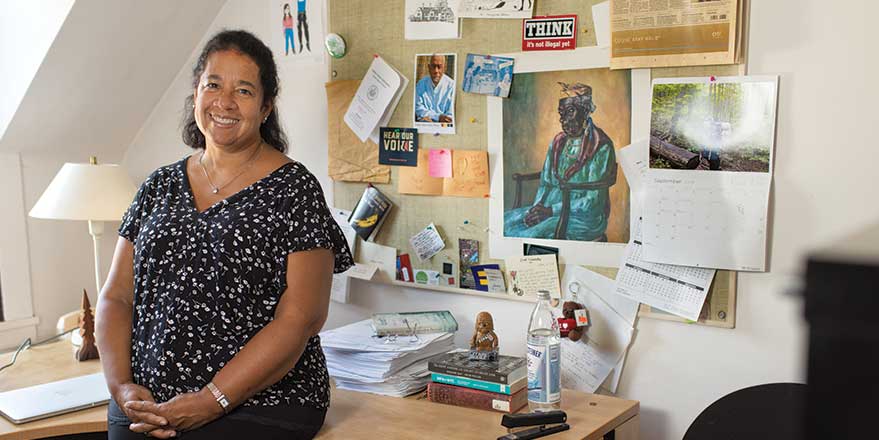
Carolyn Ferrell’s office is bursting at the seams with artwork, political stickers, and books—including her latest, the acclaimed novel Dear Miss Metropolitan. She’s watched the campus evolve from her window overlooking the Barbara Walters Campus Center—the same office she’s had since she started teaching at SLC in 1996.
Carolyn always loved writing growing up, but didn’t realize you could study creative writing as an academic discipline until she started taking classes in college. She’s published a steady stream of work since then, including essays for The New York Times, an essay that recently appeared in Apple, Tree: Writers on Their Parents, and a short story in the 2018 edition of The Best American Short Stories—her story, “The History of China,” was hand-selected by editor Roxane Gay.
“I’m totally humbled. I can’t even believe it. I was shocked that [Gay] chose it,” Carolyn recalled. “It was rejected so many places. When I met her, she wrote ‘Thank you for writing so beautifully’ in my book.”
When asked about how her writing influences her teaching, Carolyn was insistent that it was actually the other way around.
“I teach a lot of the same works year after year, and I learn more each time I read them,” Carolyn said. “I learn so much from the writers whom I assign—I think that has more of an influence than the other way around.”
Carolyn hopes that her own students emerge from her class not only stronger writers, but also stronger readers, which is partly why Carolyn assigns students additional reading for conference, based on the stories they write.
“I am always happy when students discover a writer,” she said. “I had a student in today who I thought would benefit from reading Alice Munro, and she’s already devoured two books. That’s really gratifying when they find their place and people in that writing world.”
Carolyn’s daughter is applying to college this year, provoking reflection on the value of the liberal arts and the admission process. Carolyn has this advice for students and other parents: “You have to go to the school where you are wanted,” she said. “Parents don’t think about it like that. They think, ‘Thank God my child got in.’ As a teacher, I know your child is an asset to these schools.”
Carolyn’s advice is particularly personal as a Sarah Lawrence alumna herself. “I think SLC students are a lot like they were in 1980,” she said. “They’re inquisitive, and they’re here because they want to be here. They’ve recognized the magic of this place.”
Photo credit: Don Hamerman
I am always happy when students discover a writer.